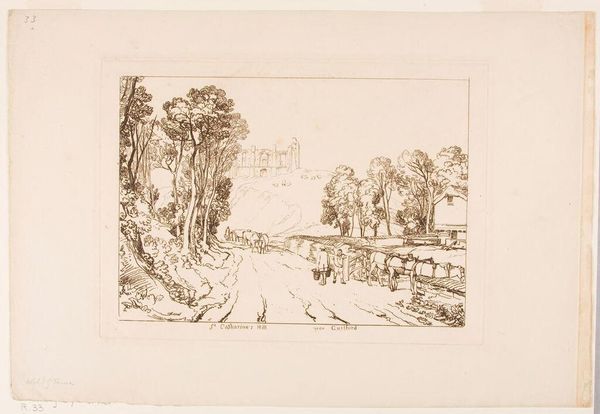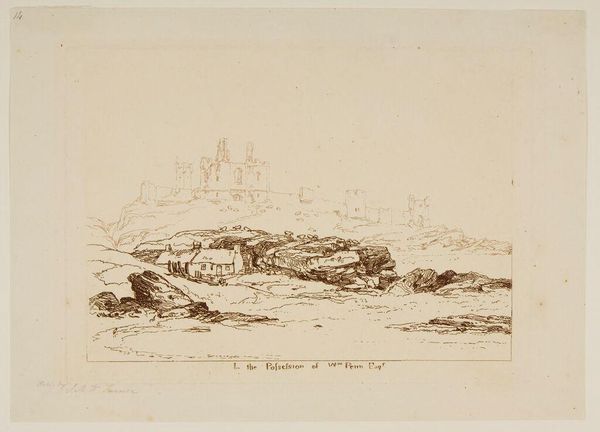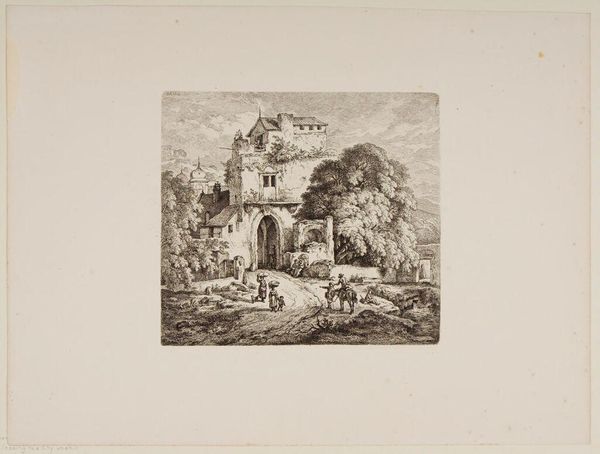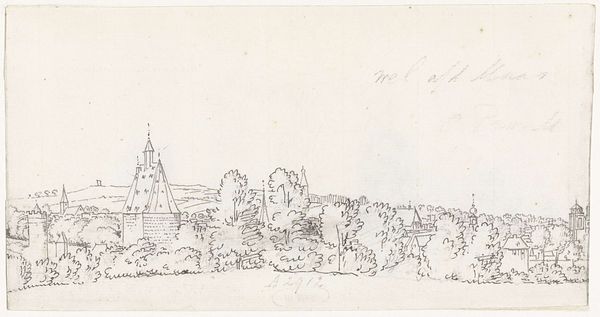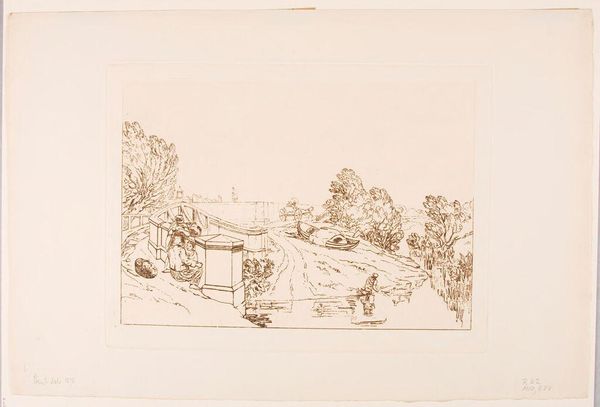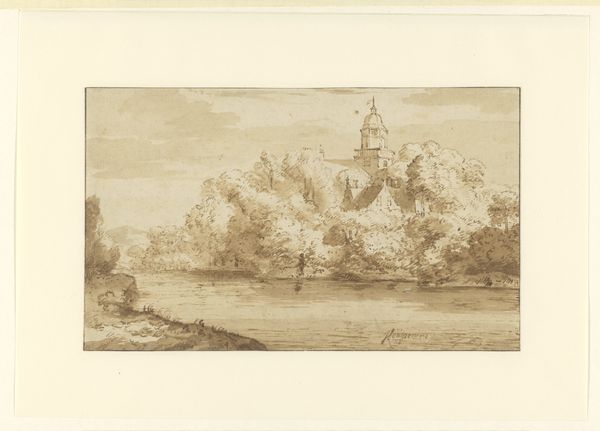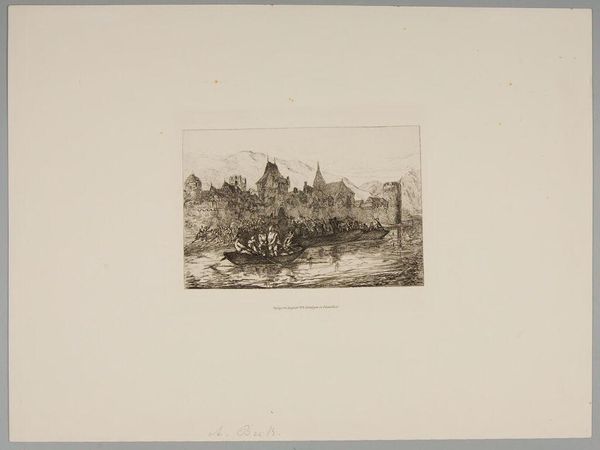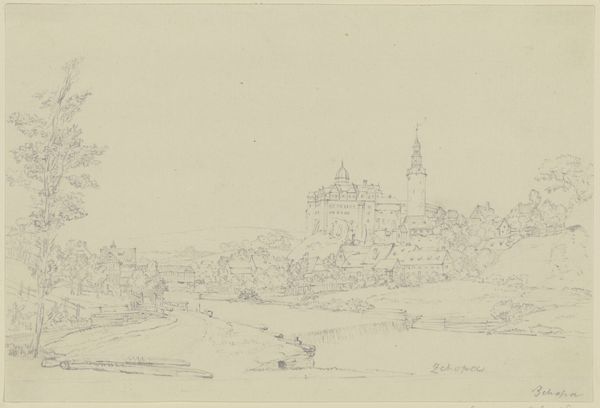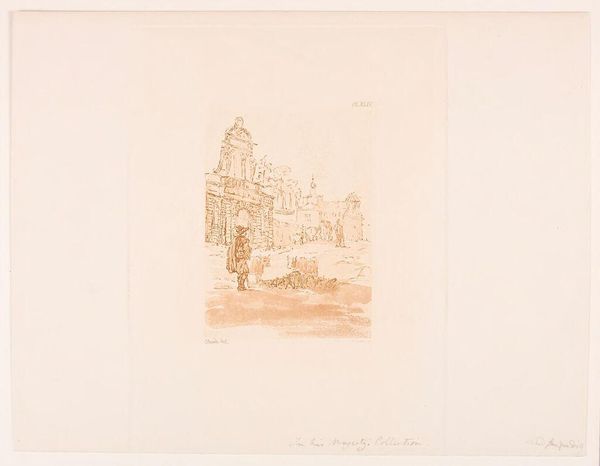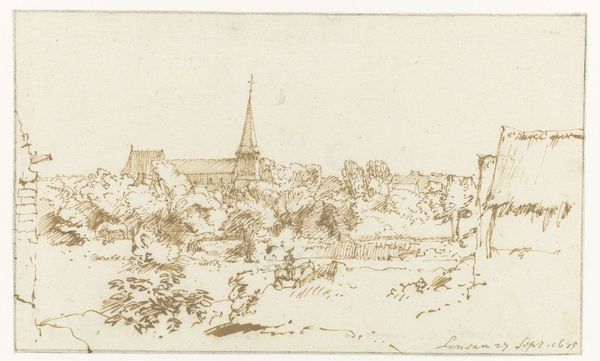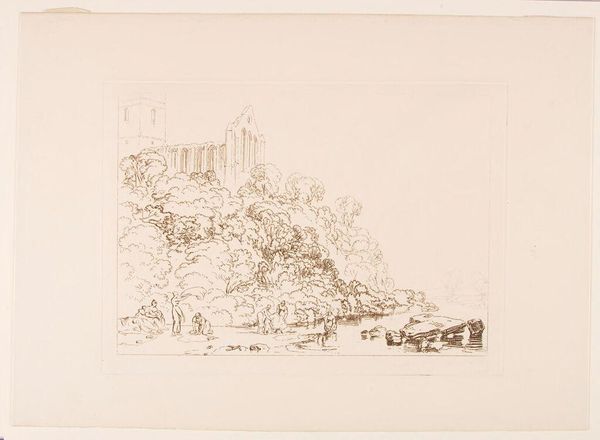
Copyright: CC0 1.0
Curator: This is J.M.W. Turner's "Ville de Thun, Switzerland," housed here at the Harvard Art Museums. The etching captures the Swiss town with delicate lines and a muted palette. Editor: It feels so fragile! The thin lines evoke a sense of quiet industry, almost like a memory etched onto paper. Curator: Indeed, the composition relies heavily on line and form. The way Turner uses hatching to define space and shadow is quite remarkable. Note how the architecture becomes almost ethereal. Editor: Yet, the small figures working on the dock, the boaters, and the barrels give a sense of the daily labor occurring within this idyllic scene. This must be the source of the town's commerce. Curator: A compelling point. The town is romanticized, yes, but there's certainly a nod to the human element, the individuals who contribute to its existence and atmosphere. Editor: Seeing the tools and the goods gives the scene meaning beyond pure aesthetics. It connects the viewer to the lived experience in a tangible way. Curator: Well, I think we can agree that it’s a lovely example of Turner’s ability to intertwine aesthetic beauty with an understanding of place. Editor: Absolutely. It prompts contemplation about how labor and life are woven into what we perceive as 'picturesque.'
Comments
No comments
Be the first to comment and join the conversation on the ultimate creative platform.
